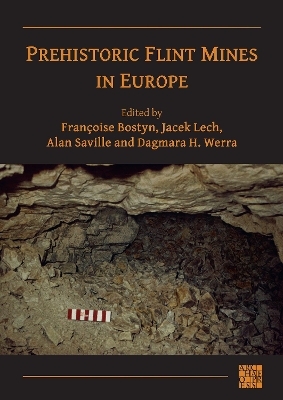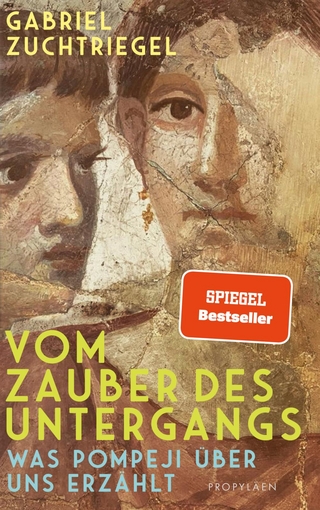
Prehistoric Flint Mines in Europe
Archaeopress Archaeology (Verlag)
978-1-80327-221-4 (ISBN)
Prehistoric Flint Mines in Europe presents the results of the UISPP Commission, Flint Mining in Pre- and Protohistoric Europe. It offers a review of major flint mines dating from the Neolithic to the Bronze Age. The eighteen articles were contributed by archaeologists from ten countries – Belgium, France, Germany, Great Britain, Hungary, Italy, the Netherlands, Poland, Spain and Sweden – using the same framework in order to propose a uniform view of the mining phenomenon. At the same time the book reflects various research methods and traditions. Each article deals successively with the geographical and geological context, mining zone topography, research history, methods of exploitation of raw material, dating of archaeological features and structures, characteristics of lithic production, organization of labour, miners' settlements, distribution of products and symbolic aspects of mining activity. Part I includes the well-known flint mines at Spiennes in Belgium, Grime’s Graves in England and Rijckholt-Sint Geertruid in the Netherlands, as well as the equally fascinating Defensola mine from Italy. Part II contains presentations of other European flint mines. The book is abundantly illustrated with large, colour photographs and drawings, and is aimed not only at archaeologists, who will find valuable data and further literature, but also at any reader seeking up-to-date information on prehistoric flint mining communities in Europe.
Françoise Bostyn is professor of Neolithic archaeology at the Paris 1-Pantheon-Sorbonne University. She is a specialist of Neolithic period and works more particularly on lithic technical systems from the end of the 6th millennium to the 4th millennium BC in northern France. Through a global technological approach, she addresses issues of artisanal specialisation and exchange networks in early and middle Neolithic societies. Jacek Lech is researcher of prehistoric flint mining in Poland and Europe. He also studies distribution of siliceous rocks in Central Europe in settlement and social contexts with a particular focus on the Danubian exchange network (Bylany). Since 2000 he has been full professor at the Cardinal Wyszyński University in Warsaw. Alan Saville (1946-2016) was an archaeologist and a founding member of the UISPP Commission ‘Flint Mining in Pre- and Protohistoric Times’. He worked as senior curator at the National Museums Scotland, Edinburgh, and earlier as Archaeological Field Officer of the Western Archaeological Trust. He led the excavation of flint mine sites at Den of Boddam and Skelmuir Hill, both in the Grampian region of north-east Scotland. Dagmara H. Werra is an archaeologist and ethnologist at the Institute of Archeology and Ethnology of the Polish Academy of Sciences. In her professional career, she has focused on prehistoric flint mining, the use of flint in the Stone Age and Metal Ages, and the identification and use of siliceous rocks by prehistoric communities.
Introduction ;
About the beginnings of prehistoric archaeology, studies of stone artifacts and ancient flint mines – Françoise Bostyn, Jacek Lech and Dagmara H. Werra ;
Part I: Key Sites of Prehistoric Flint Mining in Europe ;
Chapter 1: The Early Neolithic mine of Defensola and the Gargano Promontory (Italy) – Attilio Galiberti and Massimo Tarantini ;
Chapter 2: The mining complex at Rijckholt-St Geertruid (Eijsden-Margraten, Limburg NL) – Marjorie E. Th. de Grooth , Jos Deeben*, Jan Willem de Kort and José Schreurs ;
Chapter 3: The Neolithic flint mines of Spiennes (Belgium) – Hélène Collet and Jean-Philippe Collin ;
Chapter 4: Grime’s Graves (England) – Frances Healy, Peter Topping and Gillian Varndell ;
Part II: Some other European Flint Mines ;
Chapter 5: The Flint Mine of Casa Montero (Madrid, Spain) Making Society in Early Neolithic Europe – Pedro Díaz-del-Río, Susana Consuegra, Nuria Castañeda, Enrique Capdevila, Marta Capote, Cristina Criado, Cristina Casas and Aurora Nieto ;
Chapter 6: The Chocolate Flint Mine of Tomaszów (Poland) – Romuald Schild ;
Chapter 7: Sąspów near Cracow (Poland). A Neolithic flint mine of the Danubian communities – Jacek Lech ;
Chapter 8: Neolithic Chert Extraction and Processing on the Southeastern Swabian Alb (Asch-Borgerhau, Germany) – Lynn E. Fisher, Corina Knipper, Susan K. Harris and Rainer Schreg ;
Chapter 9: The Late Neolithic opencast flint mining and axehead blank production on the Lousberg in Aachen (Germany) – Daniel Schyle and Jürgen Weiner ;
Chapter 10: The Nagytevel flint mine (Hungary) – Katalin T. Biró and Judit Regenye ;
Chapter 11: Flintmining at Södra Sallerup (Sweden) – Elisabeth Rudebeck, Anders Högberg, Deborah Olausson in cooperation with Åsa Berggren ;
Chapter 12: Cissbury and the South Downs Flint Mines, Sussex (England) – David Field ;
Chapter 13: The neolithic flint mine at Jablines, ‘le Haut-Château’ (Seine-et-Marne, France) – Françoise Bostyn ;
Chapter 14: The Flint Mine of Ri-Ronai (Orne, Basse-Normandie, France) – Emmanuel Ghesquière, Cyril Marcigny with the collaboration of François Charraud, David Giazzon, Sébastien Giazzon, and Laurent Juhel ;
Chapter 15: The Neolithic quarries at Plancher-les-Mines (Haute-Saône, France), 5th and 4th millennia cal BC– Pierre Pétrequin ;
Chapter 16: ‘Les Orlets’ and ‘Le Grand Bois Marot’ at Villemaur-sur-Vanne (Aube): face to face in the Pays d’Othe mining complex – Pierre-Arnaud de Labriffe ;
Chapter 17: Borownia (Poland). A mine of striped flint from the Early Bronze Age – Jacek Lech ;
Chapter 18: Wierzbica ʻZeleʼ (Poland). A flint mine from the Bronze Age – Jacek Lech and Dagmara H. Werra
| Erscheinungsdatum | 30.09.2023 |
|---|---|
| Reihe/Serie | Union Internationale des Sciences Préhistoriques et Protohistoriques |
| Zusatzinfo | 418 figures, 22 tables (colour throughout) |
| Verlagsort | Oxford |
| Sprache | englisch |
| Maße | 205 x 290 mm |
| Gewicht | 600 g |
| Themenwelt | Geisteswissenschaften ► Archäologie |
| Geschichte ► Allgemeine Geschichte ► Vor- und Frühgeschichte | |
| ISBN-10 | 1-80327-221-X / 180327221X |
| ISBN-13 | 978-1-80327-221-4 / 9781803272214 |
| Zustand | Neuware |
| Informationen gemäß Produktsicherheitsverordnung (GPSR) | |
| Haben Sie eine Frage zum Produkt? |
aus dem Bereich


